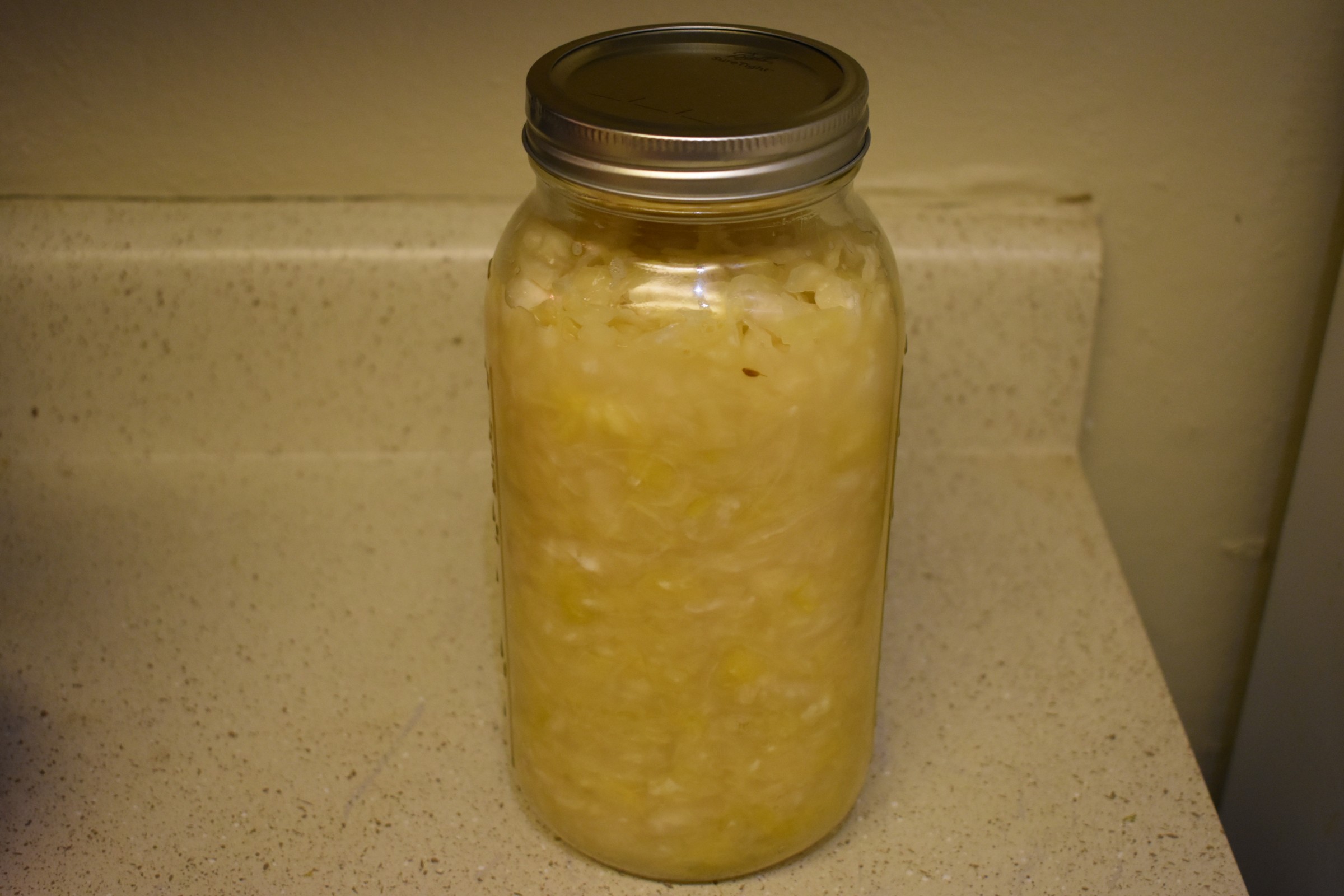Sauerkraut is one of those food/toppings that always gets my attention. Not much is better than a hotdog with some good sauerkraut. However buying sauerkraut is something that never comes to mind for me, as I don’t often eat hotdogs or make Reubens at home. One of my favorite youtube series is “It’s Alive with Brad” which goes over how to make fermented and other “alive” food and drink. The episode on Sauerkraut showed me that it was so easy to make, that it was worth a try.
Tools needed
You can make this in a mason jar but the list below is what I used and will make your life much easier.
- Wooden Tamper
- Fermentation Container
- 64 ounce jar
- A big bowl ( I wish I had this when I was preparing the Sauerkraut)
Ingredients needed
Three ingredients are needed, you can add additional spices if you want but I kept it classic and simple.
- Cabbage
- Caraway seeds
- Canning and Pickling Salt (Salt choice is very important)
The Process
The theme of making Sauerkraut is simplicity. The only challenge is measuring the salt to cabbage ratio. To do this you will need to weigh your cabbage and then add the salt accordingly. The ratio is 10g of salt for every 1lb of cabbage. Salinity is important in fermentation; too little salt can lead to harmful mold and bacterial growth, too much salt will lead to the fermentation process taking longer or failing completely.
While cutting the cabbage, reserve a few of the outside leaves, we will use these to cover over the Sauerkraut as it ferments.
As mentioned earlier the choice of salt is important. Most salts have anti-caking agents and iodine added. These additions will lead to your foods coming out saltier tasting and harms the bacteria growth. Most sites will say to use all natural sea salt and himalayan salt only and frankly that is bullshit. To be fair, those are quality ingredients but canning/pickling salt does not have iodine or caking agents and is a hell of a lot cheaper. Your mileage may vary but the same people who push himalayan salt probably don’t’ vaccinate their children so take that in mind.
After you have cut and measured your cabbage and salt, combine them in a bowl and really work the mixture through your hands. Knead the mixture like you are kneading dough. During this process you will begin to feel a difference in the cabbage as the cabbage goes from firm to soft(Uh ….) and water is released from the cabbage. At this point let the cabbage sit for 30 minutes and then add the caraway seeds.
Final step is to pack this into the fermentation container. This container is nice because it makes it easy to keep the cabbage secured under the liquid and keeps any smells from leaking out due to the double lid. Transfer the cabbage into the container and then use the tamper and really push down on the cabbage. If there is not enough liquid at this point to cover the cabbage, you can make a brine by combing 1 tbs salt per cup of water. The cabbage needs to be submerged. Once everything is packed, add the reserved leaves to the top of the cabbage. This is overkill as the fermentation container has a lid for this reason but it makes me feel better.
Once all this is done, place the fermentation container in a cool, dark area and let it ferment up to four weeks. During this time, check in every week and verify that no mold is developing and perhaps ask the Sauerkraut how its day is going and encourage the bacteria by saying “Way to go, good job” or whatever you prefer.
The End Result
At the end of four weeks it is time to transfer the Sauerkraut to its new home.
This Sauerkraut was the best I ever had. It did not have the overwhelming saltiness that I feel most Sauerkrauts have. I did not get overwhelmed by the taste and simply wanted more. If you enjoy Sauerkraut and want to have a fun project, I highly recommended purchasing the tools/ingredients and getting to work.
Waiting for four weeks has you develop a bond with your Sauerkraut, go ahead and celebrate a little bit.





